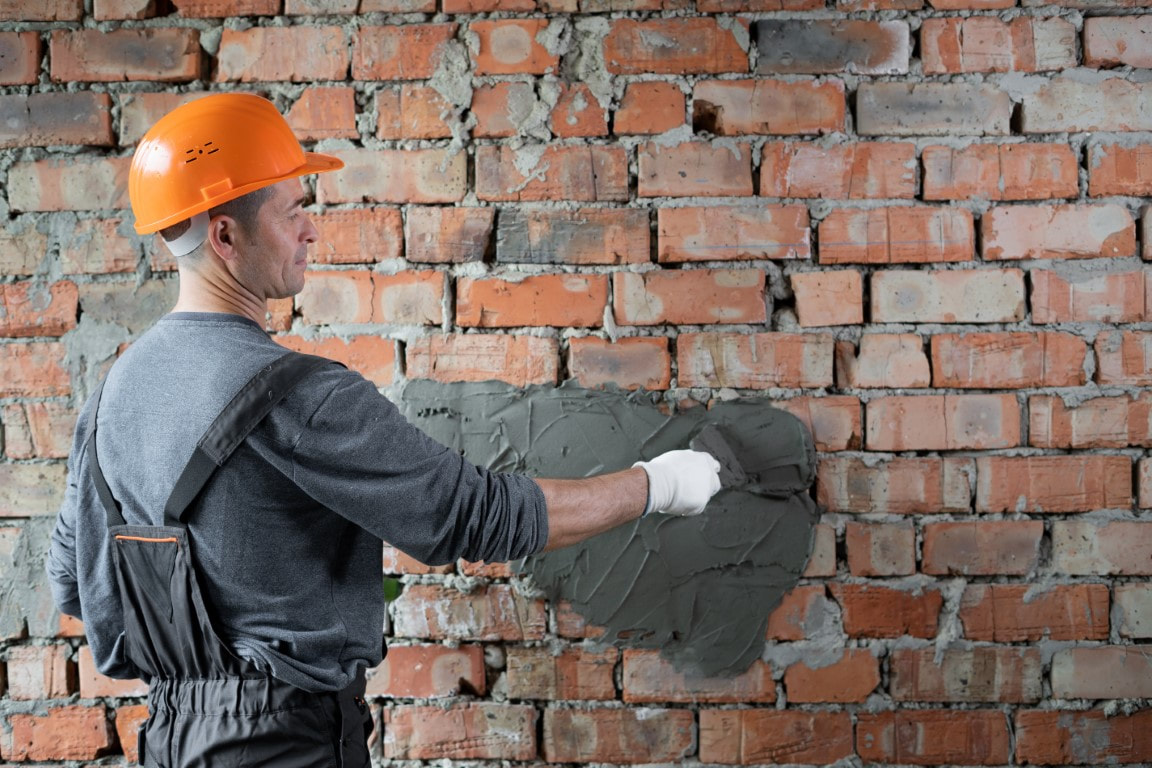Unlocking the Secrets of Sustainable Stonework Construction Practices for Eco-Friendly Structures
Amongst the myriad approaches to environment-friendly building, sustainable stonework building and construction stands out as a time-tested and sturdy method that holds a riches of untapped potential. From the choice of materials to cutting-edge construction methods, the secrets to accomplishing sustainability within stonework building and construction are diverse and fascinating.
Benefits of Sustainable Masonry Construction
Embracing sustainable stonework construction practices not just minimizes environmental impact yet likewise offers lasting economic advantages to building contractors and neighborhoods. By utilizing materials like recycled blocks, blocks, and rocks, building contractors can substantially decrease the carbon impact of their jobs while advertising source effectiveness. Additionally, lasting masonry construction methods, such as appropriate insulation and thermal mass residential properties, can boost power effectiveness within buildings, causing reduced functional prices gradually.
Moreover, the longevity and durability of stonework structures add to lasting economic advantages. Structures constructed utilizing lasting masonry practices usually require less upkeep and fixing, equating to set you back savings for building contractors and homeowner. The longevity of stonework products also makes sure that structures stay secure and secure, decreasing the demand for frequent remodellings or substitutes.
Eco-Friendly Masonry Products
Utilizing green masonry materials is a pivotal step in the direction of improving the sustainability of building and construction practices and lessening ecological influence while making best use of long-lasting financial benefits. Sustainable masonry products are sourced, generated, and made use of in a way that minimizes general environmental impact. Materials such as recycled blocks, redeemed rock, and sustainable concrete blocks are coming to be significantly prominent choices for eco-conscious contractors. Recycled bricks, for instance, not just divert waste from landfills but additionally need less power to create compared to brand-new blocks. Reclaimed rock supplies an one-of-a-kind aesthetic appeal while lowering the demand for new quarrying. Sustainable concrete obstructs integrate recycled aggregates and might feature improved insulation residential properties, adding to energy efficiency in structures.
Furthermore, natural products like adobe, rammed planet, and straw bales supply excellent thermal mass residential properties, decreasing the requirement for home heating and cooling down energy. These materials are typically in your area available, promoting regional economic situations and reducing transportation-related carbon discharges. By choosing green masonry materials, building projects can substantially minimize their ecological impact and add to the production of healthier, much more sustainable developed atmospheres.
Energy-Efficient Masonry Techniques
Energy efficiency plays an important function in improving the sustainability of masonry building practices. By executing energy-efficient masonry techniques, builders can significantly lower the total power intake of a structure, causing reduced operational costs and a smaller sized ecological footprint. One key energy-efficient masonry technique is the usage of thermal mass, which includes integrating dense products like concrete or block into the building's framework to take in and store heat. This aids manage interior temperatures, decreasing the need for mechanical heating and cooling systems.

Advancements in Lasting Stonework
Recent advancements in lasting masonry practices have actually caused cutting-edge strategies that are improving the building and construction market. One such technology is the growth of self-healing concrete, which makes use of microorganisms installed within the concrete to heal fractures autonomously. This breakthrough not just lowers maintenance prices yet likewise enhances the toughness of masonry frameworks, adding visite site to their sustainability.
Another remarkable advancement is the use of recycled accumulations in masonry building and construction - masonry contractor. By integrating materials such as smashed ceramic waste or recycled glass into concrete blends, contractors can lower the environmental influence of building tasks while maintaining architectural integrity. This technique not only draws away waste from landfills however also saves natural sources, making it a key improvement in sustainable stonework construction
Moreover, the integration of electronic design tools, such as Structure Information Modeling (BIM), is revolutionizing the method stonework structures are prepared and created. BIM enables for more accurate estimations, reduced material wastefulness, and improved power performance, ultimately bring about more lasting structure practices. These advancements collectively represent an encouraging future for sustainable masonry building in the age of eco-friendly structures.
Future Trends in Stonework Sustainability
With the cutting-edge strides made in lasting stonework techniques, the future trends in masonry sustainability are positioned to more revolutionize the construction industry. One of the key trends shaping the future of masonry sustainability is the increased integration of technology. Developments such as Building Information Modeling (BIM) and online reality simulations are being utilized to optimize stonework building and construction procedures, causing minimized product my site waste and enhanced energy effectiveness in buildings.
Additionally, the advancement of unique lasting products is established to play a significant function in boosting the eco-friendliness of stonework building. masonry contractor. Technologies like self-healing concrete, recycled accumulations, and bio-based binders are getting grip for their capability to lessen environmental effect while preserving structural honesty

Verdict
To conclude, sustainable masonry building techniques supply numerous benefits for environmentally friendly browse around this web-site buildings. By utilizing environmentally friendly materials and energy-efficient methods, masonry can add to a much more sustainable built environment. Developments in sustainable masonry are continuously being developed to further enhance the ecological efficiency of structures. Looking in the direction of the future, the pattern of masonry sustainability is expected to grow, leading to even more eco pleasant and energy-efficient building and construction techniques in the years ahead.